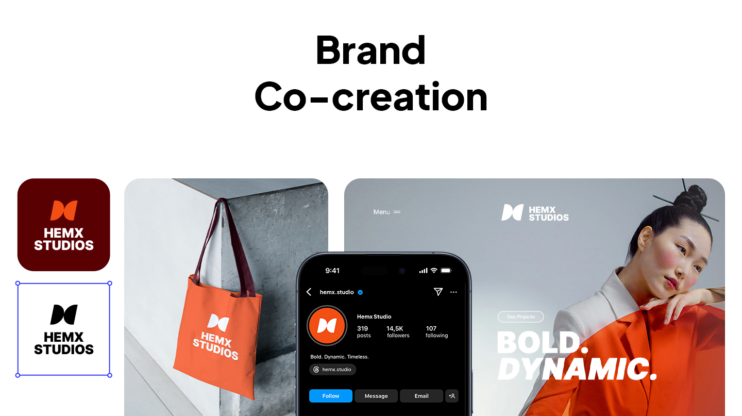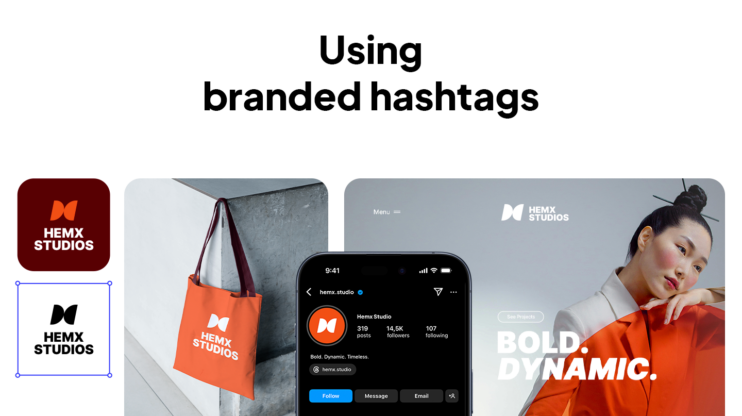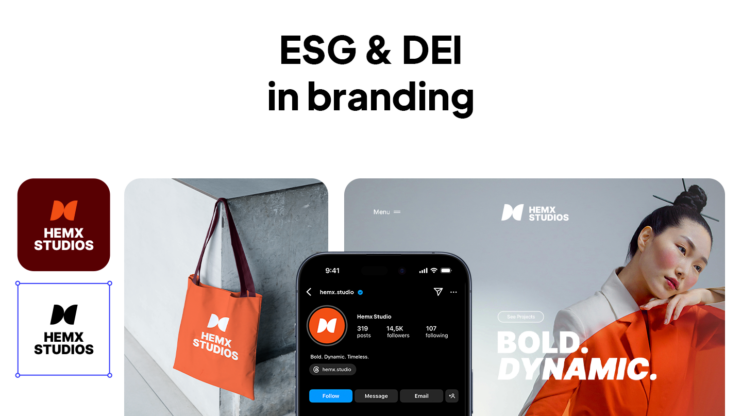If you want to reward brand advocates with loyalty programs that build momentum, you need more than points and punch cards.
Whether you run an ecommerce store, SaaS platform, or local business, this guide covers:
- How to identify your most loyal and vocal customers
- Loyalty program types that go beyond discounts
- Reward strategies tailored to different business models
- Simple ways to track success without complex tools
Let’s turn your best customers into your biggest growth channel.
Why you should reward brand advocates
Brand advocates are your most valuable customers. Not just because they keep buying, but because they’re also most likely the ones talking about what they buy. Rewarding them creates a positive feedback loop, speeds word-of-mouth awareness, drives organic growth, and stretches your marketing budget further than traditional ad spend could ever dream.
When a customer becomes an advocate, they’re doing more than just sticking around. For one, they’re likely also selling for you. The customers who make your products a part of their lives also tend to:
- Post about your product on social media
- Engage with brands more on social media.
- Mention it to their friends
- Leave reviews that will make your marketing team misty-eyed
- Persuade others to take the leap and make the purchase
These actions are far more potent than a single repeat purchase. Not only do your most loyal brand advocates act like a pro bono sales team, but their cheerleading also creates trust at scale, funneling the most coveted VIP customers your way. Referrals.
Studies show that referred customers have a 37% higher retention rate and spend twice as much as non-referred customers. Meanwhile, customer acquisition costs (CAC) are rising across industries.
Rewarding your top fans helps you tap into word-of-mouth marketing that compounds over time, ultimately driving business growth. Plus, these customers are your pep squad. It would be pure neglect to deprive these brand advocates of a loyalty plan they’ll appreciate.
Most loyalty programs focus on discounts and purchases, but brand advocates are motivated by more than just points. They want recognition, connection, and exclusivity. These are things only your brand can offer. But you know your customers best. Consider this a guide to help you hone in on a loyalty program that values your customers with the right rewards.
Who are brand advocates, and how do you identify them?
Brand advocates are loyal customers who promote your business without being asked or paid to do so. But they’re not always obvious. Some leave detailed product reviews. Others casually tag you in posts or recommend you to a friend.
The best part is you don’t need fancy tools to find them. You can spot them through reviews, referrals, social engagement, and repeat purchases if you know where to look:
- Review patterns: Look for repeat reviewers who give thoughtful feedback. They often provide more than just five stars. They also tend to share stories, add a photo or video, and provide details that help persuade others to make a purchase.
- Referral history: Customers who’ve referred others (even without a reward) are showing trust and influence.
- Social mentions and tags: Regular engagement, shares, hashtags, and related posts signal natural advocacy.
- Purchase behavior: Your most frequent or highest-value buyers are likely to be some of your biggest fans, even if they’re quiet about it (so far).
3 clear signals from brand advocates
Brand advocates (and potential advocates) are often spotted by their:
- Repeat engagement – They show up often: via email clicks, purchases, or likes.
- Voluntary promotion – They talk about you publicly without prompting.
- Value contribution – They help others decide to buy (via referrals, reviews, or testimonials).
If a customer ticks two or more of these boxes, you can be sure they’ll appreciate a well-designed loyalty program that rewards advocacy.
Best loyalty program types for brand advocates
Brand advocates delight in recognition, insider perks, and experiences that deepen their connection to your brand. When you acknowledge your most loyal customers, even with something as simple as early access to new features or a personalized thank-you, it reinforces that connection. People like to feel seen, and they remember who made them feel that way.
Most loyalty programs are designed to increase repeat purchases. But if you want to reward brand advocates, you need to go beyond simple cashback and coupons. The most effective loyalty formats offer emotional value, exclusivity, or status, not just financial incentives.
Planning a rotation of methods to show appreciation can help keep things fresh and naturally cultivate customers’ goodwill. A seasonal calendar can help to map out special events and campaigns to encourage your best brand advocates to repeat their behavior.

Try the Free Branding Kit from 10Web!
You’ve done the work. Now build the brand that shows it!
For most business types, you’ll find five loyalty program types that work exceptionally well for rewarding advocacy:
1. Points and referral bonuses
Earn points for purchases, social sharing, reviews, or referrals. This combines traditional loyalty with word-of-mouth fuel.
Best for: Ecommerce brands, DTC shops, product-based businesses
Why it works: Advocates feel rewarded for actions they’re already taking, and referrals become a natural extension of loyalty.
2. Tiered loyalty programs
Unlock better rewards as customers move through tiers based on engagement, referrals, or spending.
Best for: Beauty, fashion, food & beverage, and lifestyle brands
Why it works: Gamifies loyalty and encourages repeat action. Advocates feel recognized as VIPs when they hit higher tiers.
3. Insider access programs
Offer exclusive perks like early access to product launches, limited-edition drops, or behind-the-scenes content.
Best for: SaaS tools, creator-led brands, and mission-driven companies
Why it works: Creates a sense of belonging and special status. Advocates feel like part of the brand’s inner circle. It’s a win-win, as they may also mention it to others, either online or in person.
4. Recognition and community perks
Highlight top advocates publicly via leaderboards, “customer of the month” spotlights, or featured stories.
Best for: Local businesses, educators, niche services
Why it works: Recognition is a powerful motivator. Advocates feel seen and valued, not just rewarded. This can also create a buzz in the community and encourage brand mentions.
5. Pleasant surprises
Send small, unexpected gifts or thank-you notes to your most engaged customers, especially those who refer or promote you organically. Something that shows you know what your customers like best is more likely to be remembered.
Best for: Small teams, service providers, and brick-and-mortar retailers
Why it works: Personal touches are memorable. These moments are often shared, creating new advocacy loops and fostering solid relationships.
Loyalty programs are not one-size-fits-all
Personally, I’ve noticed brands blending these models appear to get the best results. For example, a tiered program that includes referral points and insider perks can keep customers engaged at multiple levels, earning, sharing, and naturally enjoying their role in your brand story.

Try the Free Branding Kit from 10Web!
You’ve done the work. Now build the brand that shows it!
Loyalty strategies by business type
The most effective loyalty programs are designed with your ideal brand advocates in mind. That means you’ll need the right strategies to reward brand advocates across ecommerce, SaaS, retail, and more. I asked our product experts for some advice on adapting popular loyalty programs to different types of brands. As it turns out, the key to nailing a loyalty program lies in knowing your customers and how your brand or product connects with their daily lives.
“Everything we do is customer-focused, so we start with the basics. What does success look like for our users, and how can we reward the behaviors that get them to that point?”
This is effectively working backward. You take the action that creates the most value for you and customers, then work to identify the right program that encourages that specific action. For us, that also means we need to think about our different kinds of users, what they’re trying to accomplish, and how they’re achieving results.
- WordPress pros: If you’re a freelancer and need to deliver a dozen custom WordPress themes every month, you need tools to get new projects wrapped up quickly while producing professional results. Someone like this might like to see tiered benefits that scale with their volume.
- Digital Agencies often juggle a large number of clients they want to retain and upsell. B2B clients like this always value bulk, or volume-based discounts. Offering access to early features can also help keep some of these clients engaged.
- Indie tinkerers and SaaS entrepreneurs thrive on speed, flexibility, and innovative features. Rewarding these types of users could include extended trials so they can experiment with new workflows or referral bonuses that help offset overhead costs.
- SMB founders generally want a balance between affordability and autonomy. Rewards for these users might look more like free DIY resources, priority support, or renewal discounts.
- Our no-code website builder users love the freedom the AI Website Builder provides. They get complete ownership of their site and code. These users might find value in advanced customization tools or exclusive design packs.
“The best programs,” Suren adds, “naturally gel with your brand and leave customers with positive vibes that drive word-of-mouth awareness.” You’re not likely to get that from copying a generic loyalty model, but if you know your customers, you can use those frameworks to create something right for your brand.
Ecommerce brands
For online stores, advocacy often shows up through repeat purchases, product reviews, and subscriptions. Your loyalty program should make it easy to earn rewards for these behaviors.
Tactics that work:
- Award benefits for subscriptions
- Points systems that reward repeat purchases
- Offer early access to product launches and events or seasonal drops for loyal advocates
An example of this loyalty program
Amazon wrote the book on subscription programs with Amazon Prime. The ecommerce giant’s premium annual membership grants users fast, free shipping, limited access to Amazon Music, streaming on Prime Video, and free reading materials each month, among other perks.
SaaS tools
In SaaS, brand advocacy takes the form of product referrals, testimonials, and community engagement, rather than offering discounts or perks that merely deepen value or unlock access.
Tactics that work:
- Reward referrals with free months or upgrade credits
- Invite advocates to closed beta features or roadmap feedback sessions
- Highlight top users in newsletters or help forums
An example of this loyalty program
Dropbox’s referral program encourages new sign-ups with the prospect of free storage for you and anyone you send their way using your referral link. This loyalty program uses a tiered system, too. Dropbox Plus users can earn more free storage per referral.
Brick-and-mortar retail
For local shops and service businesses, loyalty and advocacy are built through in-person experiences and a sense of community. The best strategy here is to keep it simple, but personal.
Tactics that work:
- Offer “preferred customer” punch cards with occasional surprise bonuses
- Run a VIP email or text list for flash discounts or private events
- Recognize frequent visitors with shout-outs, freebies, or birthday gifts
An example of this loyalty program
Domino’s Emergency Pizzas offered a unique spin on the classic punch card. The national pizza chain teamed up with New England Patriots’ Stefon Diggs to offer $1 million worth of free pizzas. For a limited time, customers were rewarded with a free pizza, redeemable within 30 days after a qualifying purchase.
Beauty, fashion, and lifestyle brands
These industries thrive on social proof, aesthetics, and community. Use this to your advantage by turning loyal customers into content-generating fans.
Tactics that work:
- Create a VIP tier for repeat buyers with exclusive drops
- Host UGC contests with loyalty point rewards
- Give advocates affiliate-style referral codes for store credit
An example of this loyalty program
Sephora’s Beauty Insider program is a classic example of how ecommerce brands implement tiered rewards. Customers earn points for purchases and redeem them for freebies, exclusive offers, events, or discounts. The more you spend, the better the rewards.
Coaches, creators, and personal brands
If you sell services, digital products, or courses, your advocates often become your most powerful promoters, primarily through testimonials and community buzz.
Tactics that work:
- Give access to bonus trainings or private Q&As for advocates
- Offer early-bird access to launches or limited coaching spots
- Reward consistency, milestones, competition, and special days like a client’s birthday.
An example of this loyalty program
You’ll often find fitness coaches using a gamification system for rewarding clients. In addition to exclusives and giveaways, these brands might use recognition for achievements and consistency, gamifying their loyalty program.
Tips for building & launching your advocate loyalty program
A great loyalty program doesn’t have to be complex. If advocates feel seen and rewarded, consider it a step in the right direction for further improvement. Once you’ve piloted your program, it’s time to listen to customer feedback and adjust the course to develop rewards that encourage natural brand promotion:
1. Match the program to your customer behavior
Before selecting a platform or naming your tiers, take the time to understand how your most valuable customers interact. Are they buying monthly? Sharing on social? Referring friends? Build rewards around those actions, not just purchases.
2. Keep it simple to join and understand
Avoid bloated systems with confusing rules. Don’t make your best brand advocates jump through hoops or wait around for a long-winded explanation. Make sign-up easy, clearly explain how to earn and redeem rewards, and send reminder emails that keep them informed.
3. Make the program feel on-brand
The best loyalty programs feel like an extension of the brand, not a generic token effort. Name your program something memorable, align the visuals with your brand guidelines, and incorporate brand language into your messaging.
Examples:
- “The Inside Seam” for a fashion brand
- “Mission Miles” for a sustainable DTC brand
- “Pro Perks” for a SaaS tool
4. Use automation, but keep it personable
Most loyalty platforms integrate with your email or CRM. Automate the basics like point updates, reward reminders, referral invites, then add a personal touch with thank-you notes, founder emails, or surprise rewards.
5. Promote it like a product launch
A loyalty program deserves its own spotlight. Tease the benefits before launch. Feature top customers as “founding members.” Create a landing page or in-app explainer. The more excitement you build, the more likely customers are to join and do their thing.
Test the waters: Run a 2-week “advocate hunt” post-launch. Reach out to your top 20 customers directly, invite them in early, and ask for feedback. Their engagement will give your program an authentic boost.
How to measure success without an enterprise tool
You don’t need expensive dashboards to know your loyalty program is working. Use Google Analytics, your ecommerce platform, or email marketing tool to segment and tag loyalty program members. This provides lightweight methods for comparing behavior over time.
Key metrics to track
Track simple metrics tied to referrals, engagement, and repeat behavior to see how effectively your advocates drive growth. Even if you’re not using enterprise software, you can still get a clear picture of whether it’s helping you retain top customers and turn them into growth drivers.
- Referral volume – How many referred customers are coming from loyalty links or codes? Even a basic referral field at checkout can help you attribute new business to your top advocates.
- Repeat purchase rate – Are customers in your program buying more often? Compare your repeat purchase rate before and after launching your program, or between members vs non-members.
- Program participation rate – How many eligible customers are joining your loyalty program? A healthy opt-in rate indicates that your offer is appealing and your positioning is clear.
- Advocacy actions – Track things like:
- Social media mentions from loyalty members
- Review submissions
- UGC participation
- Customer Lifetime Value (CLV) by segment – Even a rough comparison between the average Customer Lifetime Value (CLV) for loyalty members and non-members can reveal whether your advocates are sticking around longer and spending more.
These indicate whether your program is promoting the behaviors you truly value.
The Advocate Loyalty Loop
The most effective loyalty programs reward purchases and cultivate customer relationships. The Advocate Loyalty Loop is a straightforward framework to help you recognize, reward, and re-engage your most valuable customers in a way that fosters long-term advocacy.
Brand advocates rarely become vocal superfans because of a one-time reward. What really drives long-term promotion is a cycle of recognition, value, and participation, the feeling that they matter to your business, not just your bottom line.
Let’s call this the Advocate Loyalty Loop. It works like this:
The four phases of the Advocate Loyalty Loop
- Recognize
- Identify your top advocates by reviewing their reviews, referrals, social media tags, or purchase history.
- Acknowledge them directly, via email, shout-outs, or program invites.
- Even a small thank-you can trigger more engagement.
- Reward
- Offer value that reflects their contribution: not just discounts, but exclusivity, early access, or personal touches.
- Tie rewards to specific behaviors you want more of, like referrals or UGC.
- Re-engage
- Keep your advocates active by inviting them to new launches, referral drives, contests, or private events.
- Share results from their actions (“Your referral helped bring in 5 new customers!”).
- Repeat
- Advocacy isn’t a one-time event. It’s built over repeated positive interactions.
- Keep the loop going with new rewards, evolving program tiers, and ongoing appreciation.
This model isn’t a magic formula, but it provides a solid framework for rewarding top brand advocates with the best loyalty program. If you continually create opportunities for advocates to feel seen, valued, and involved, you increase the likelihood that advocacy becomes an integral part of their behavior, not just a one-time action.
The Advocate Loyalty Loop works best when grounded in genuine brand-consumer relationships. Sona Mamyan, Director of Growth at 10Web, points out that, “It boils down to product and community. Your best advocates are users who genuinely love and use your product.” She adds that success hinges on bringing these loyal brand advocates into a community where you can pump benefits to your VIPs and keep fueling the loop.
Reward brand advocates with loyalty programs that work
Rewarding your brand advocates through a thoughtful loyalty program helps you turn satisfied customers into long-term growth drivers. Focus on recognition, engagement, and rewards that reflect how your best customers already demonstrate loyalty to your brand.
Key takeaways
- Brand advocates are more than repeat buyers. They’re customers who actively share, refer, and engage.
- The best loyalty programs go beyond discounts, offering personalized perks, insider access, and community-driven recognition.
- Effective rewards vary by business type. Tailor your approach based on how your customers naturally engage.
- You don’t need expensive tools to measure success. Track referrals, engagement, and repeat behavior using the tools you already have.
- Use the Advocate Loyalty Loop to keep advocates engaged: recognize, reward, re-engage, and repeat.
Ready to make loyalty part of your growth strategy?
You don’t need a whole tech team or custom dev work to get started. If you’re building an ecommerce site or revamping your online store, 10Web’s AI Website Builder can help you launch a loyalty-ready website in minutes, so you can focus on building relationships that last.

Go from idea to brand in minutes.
Describe your brand and get complete brand assets.
FAQ
How do I identify my brand advocates? What kind of loyalty program works best for brand advocates? Can I build a loyalty program without expensive tools? How do I know if my loyalty program is working? What’s the difference between a loyalty program and a referral program? How can I tailor a loyalty program for my ecommerce, SaaS, or retail business? What rewards actually motivate loyal customers to advocate?










